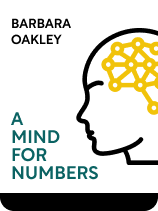

This article is an excerpt from the Shortform book guide to "A Mind for Numbers" by Barbara Oakley. Shortform has the world's best summaries and analyses of books you should be reading.
Like this article? Sign up for a free trial here .
Do you struggle with test-taking anxiety? How might your test performance improve if you successfully managed that anxiety?
According to Barbara Oakley, test-taking anxiety can be relieved by managing your time, changing how you view your anxiety, exercising mindfulness, using breathing exercises, and recording your feelings. She describes these strategies in her book A Mind for Numbers.
Read more to learn these tips for managing test-taking anxiety.
How to Manage Your Test-Taking Anxiety
In A Mind for Numbers, Barbara Oakley recommends five ways to reduce test-taking anxiety.
Strategy 1: Manage Your Time
Oakley notes that feeling like you’re running out of time on a test amplifies your test-taking anxiety. To prevent this test-taking anxiety, she advocates using the “Hard-Start, Jump-to-Easy” method to make the most efficient use of your brain, and thus of your time.
(Shortform note: Turkel and Peterson recommend a more prescriptive approach to managing your time on a test: If you know how much time you have for the test and how many points each problem is worth, you can calculate how much time it is worth spending on each problem. For example, suppose you have two hours to complete a test with 100 total points possible. That equates to 1.2 minutes per point, so if a problem is worth 10 points, you shouldn’t spend more than 12 minutes on it.)
Strategy 2: View the Anxiety as Excitement
Oakley explains that under stress, your body secretes cortisol, which raises your heart rate and causes you to sweat. When you feel these symptoms of stress, frame them in your mind as excitement, rather than dread. According to Oakley, research suggests that your mind can modulate the effects of cortisol depending on how you view the cause of the stress.
| Validating Anxiety Reappraisal Can you really improve your test performance by telling yourself you’re excited instead of anxious? What if the studies that Oakley cites just correlated students’ self-reported emotional state to their test scores? Maybe the students who had a better command of the material viewed the test as an exciting challenge, while those who didn’t know the material as well came to the test with a sense of dread. This would result in a strong correlation between high test scores and the tendency to view the test as exciting rather than scary, but it wouldn’t prove anything about your ability to modulate your test-taking anxiety. However, in the face of this objection, research provides strong evidence in support of Oakley’s claim. In one study, researchers solicited students who were taking a standardized test and divided them into two groups. The average academic proficiency of both groups before the study was the same. The researchers told both groups that they were studying the effects of test-taking anxiety on test performance, and used saliva samples to measure hormones that correspond to levels of anxiety. They also told one group that, despite anything the students might have heard in the past, the physiological symptoms caused by cortisol would tend to increase their test performance. The students who were told this consistently scored better on the standardized test than those who weren’t. This tends to imply that your brain does have the ability to modulate the effects of test-taking anxiety: If you tell yourself the symptoms are helpful, you will do better than if you believe they are harmful. |
Strategy 3: Mindfulness
Oakley says you can use “mindfulness” meditation techniques to manage test-taking anxiety. This works because diffuse-mode thinking often connects facts with emotional projections that make them more stressful. For example, suppose you have a final exam in physics class tomorrow. That’s a fact, but as you let your thoughts wander, your brain extrapolates it as follows: “I’m nervous about the exam. What if I fail the exam? If I fail the exam, I’ll flunk the class, and my career will be doomed!”
According to Oakley, “mindfulness” consists of deliberately drawing a mental distinction between the facts and the emotional projections. Then, you can accept the facts without jumping to the conclusion of the emotional projections.
In our example, the projection of impending doom is much more stressful than the upcoming exam itself, so you can reduce your anxiety by reminding yourself that, yes, you have an exam tomorrow, but that doesn’t mean your career is doomed.
| Comparing Methods of Mindfulness As we discussed in the context of ignoring distractions, Gunaratana defines mindfulness as a state of mental awareness in which you listen to your thoughts without getting caught up in them. You don’t anticipate, react, ponder, analyze, or pass judgment; you just observe. Thus, Gunaratana’s mindfulness appears to be subtly different from Oakley’s mindfulness: In Oakley’s method, you not only observe your thoughts and feelings, but also analyze them to determine what is fact and what is not, and you pass judgment on them in the form of accepting the facts while letting go of unfounded extrapolations. Perhaps the key to applying Gunaratana’s method in this situation is to be more proactive in your meditation: When you first begin to feel nervous about the upcoming test, you passively observe the sensation of anxiety and let it pass without reacting to it. If you don’t let yourself visualize failing the test or extrapolate from failing the test to failure in your career, then you should be able to circumvent a lot of the anxiety, or at least prevent it from becoming self-amplifying. This would have much the same effect as dismissing your mind’s unfounded extrapolations, but perhaps to an even greater degree, if you can prevent the extrapolation instead of merely dismissing it. |
Strategy 4: Deep-Breathing
Oakley also suggests using deep-breathing exercises to ensure that enough oxygen gets to your brain. This helps you to think clearly, which helps you maintain your composure instead of getting stressed out.
| Breathing, Tradition, and Science Oakley isn’t the first person to suggest that deep breathing can aid thinking. Many ancient cultures believed there was a connection between breathing and mental or spiritual capacities. In the Bible, the Hebrew words for “breath” are also used to mean “mind,” “spirit,” or “intellect.” Deep breathing is also integral to mindfulness meditation in ancient Buddhist traditions. Oakley’s assertion that deep breathing gets more oxygen to your brain, which helps you think more clearly, offers a scientific explanation for the widespread use of deep breathing in meditation. However, body chemistry and its neurological influence on thinking clearly are so complex that it is difficult to fully substantiate this hypothesis. It appears that modern science is still investigating the physiological effects of deep breathing on the brain, and many aspects of it still appear mysterious. For example, one study observed that deep-breathing exercises increased activity in certain parts of the brain, but the part of the brain that was affected appeared to depend on the duration of the deep-breathing session. The cause of this time-dependent localization has yet to be explained. |
Strategy 5: Journaling
If you are anxious about a test that is still days or weeks away, Oakley suggests writing out your feelings in a journal. This can help to release negative feelings and clarify your thoughts. (Shortform note: Oakley presents journaling as a tactic to be used only in advance, but Turkel and Peterson prescribe a type of journaling that can be useful at the exam itself: If your test-taking anxiety stems partly from a fear of forgetting important facts on the exam, use the first few minutes of the exam to write down the facts you are most worried about forgetting. They say this will help to clear your head and relieve your anxiety, and, if you do forget the facts later in the exam, you’ll be able to refer to what you wrote down.)

———End of Preview———
Like what you just read? Read the rest of the world's best book summary and analysis of Barbara Oakley's "A Mind for Numbers" at Shortform .
Here's what you'll find in our full A Mind for Numbers summary :
- How to make math and science intuitive
- Strategies for remembering complex concepts more easily
- How to build good study habits and avoid procrastination






